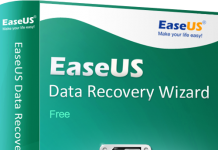Irrespective of its purpose, all websites are caught up in a daily contest for eyeballs. The average internet user has more than one website he or she can go to in order to read or buy what’s you’re selling.
Making sure the content is engaging and relevant is good but not enough. The end user’s overall experience will determine whether they are excited to visit or look forward to leave. A key component of this experience is how fast webpages load. Few visitors have the patience to wait minutes for a page to load when competing websites do so in seconds.
Here’s how you can speed things up.
1. Find a Better Web Host
Your web host provides the infrastructure that your site runs on. You’re effectively a tenant of a virtual space. Since hosting is a direct cost, it’s only natural to go for the cheapest option available. That however is not necessarily the wisest choice.
Cheap web hosts often have crowded servers shared between numerous clients. The goal is to make a profit from the thin margins. If you want your website to load quickly, a cheap web host can be an impediment. There are plenty of reasonable priced but good quality web hosts that will not choke your traffic. In this case, it’s sensible to pay slightly more for better service.
2. Switch to a Virtual Private Server (VPS)
Whereas there are web hosts that will deliver decent speeds on shared servers, this will not be a feasible option for everybody. In particular, for-profit websites may not want to risk business in the name of affordable shared hosting where they must fight for strained resources.
In the event that one website on the shared server sees a sudden spike in traffic, it’s going to dominate bandwidth and slow down the rest. By switching to a VPS, your site has predictable capacity thus allowing you to plan accordingly.
3. Optimize Images
Images are the heaviest files on a webpage. The size of a webpage determines how fast it can be delivered to the browser.
A rookie mistake is for website owners to upload large image files then use HTML code to scale them down for the end user. Whereas the image may appear smaller on the page, it still consumes the same amount of bandwidth when it’s loaded on the browser. The HTML code is effectively a zoom function that does not modify the original file.
Instead, compress and crop images to the exact size you want them. Also, go for image formats such as JPEG that result in smaller file sizes than PNG or BMP.
4. Streamline Code
HTML is heavy, dense and profoundly repetitive. CSS is more efficient but still results in a lot of redundant code. Study your website’s code and you’ll be surprised by the number of lines that are unnecessary.
Be wary about using templates from Tumblr and WordPress. The templates come with plenty of built-in options you’ll never need and only increase the size of your page. This unnecessarily slows page loading speed. Similarly, get rid of unneeded plugins.
You May Like: Google incorporating a truth score; anti-vax & conspiracies to rank lower
5. Regularly Monitor Performance
Successful websites are a permanent work in progress. No matter how well they’re optimized, they’re never really done. Constant content updates mean efficiency gains may be eroded over time. To stay on top of changes, regularly monitor page performance including loading speed.
Depending on how you much traffic the site attracts and how regularly you make changes, you should look at performance metrics on a daily or weekly basis. This ensures you can arrest any emerging crisis before it spirals out of control. For example, if your site is running on IIS, you can follow this link https://stackify.com/how-to-monitor-iis-performance/ to see what to look out for.
Faster page loading speeds mean happier visitors, better search engine result ranking and, if you are in business, more sales.














































